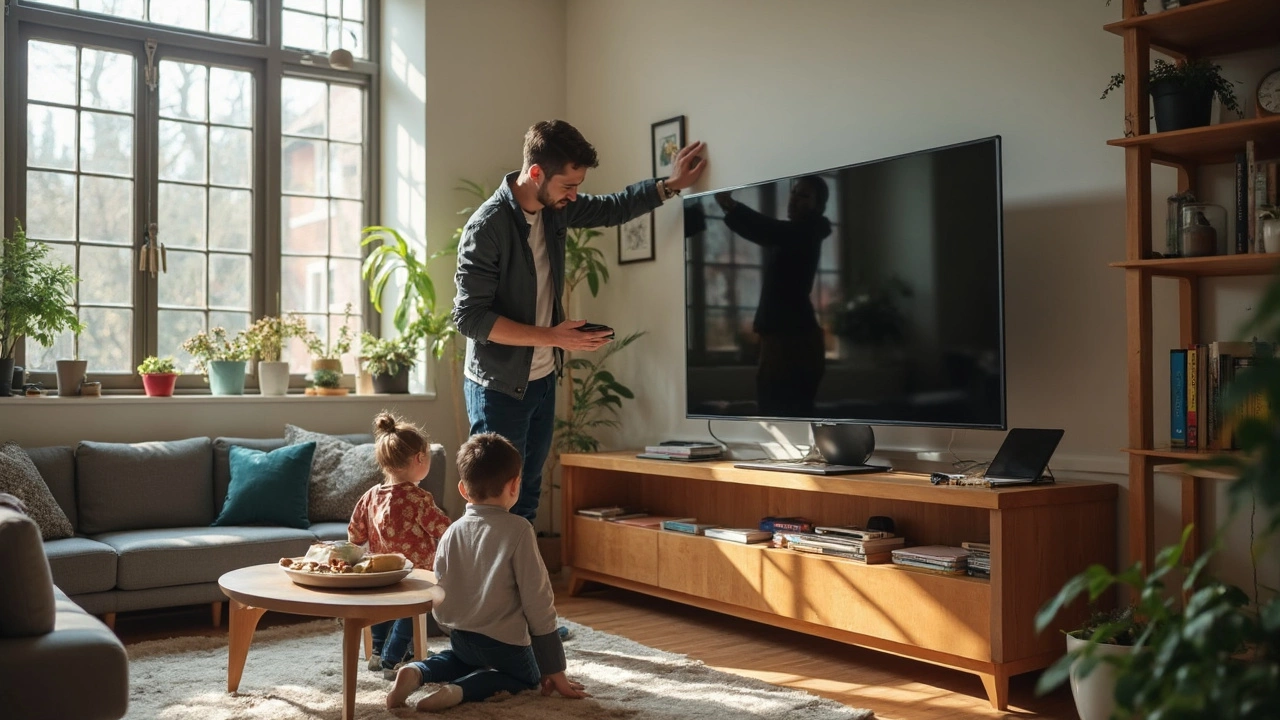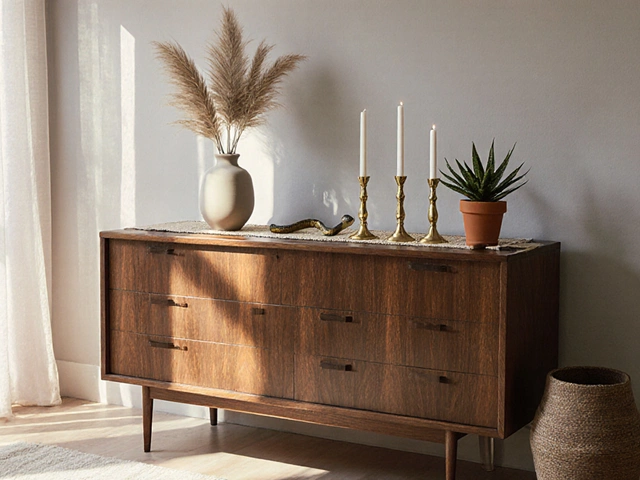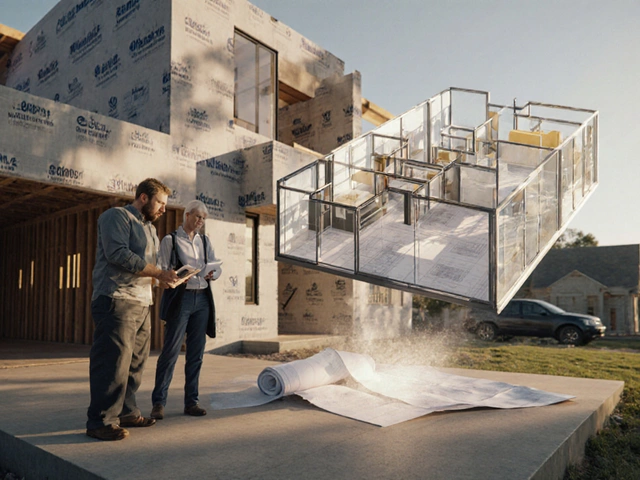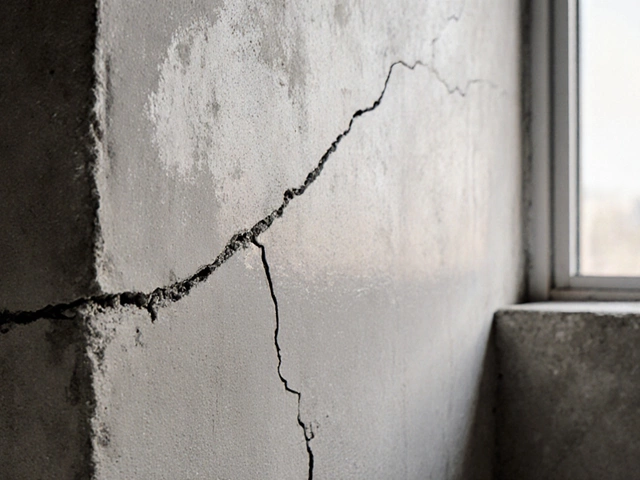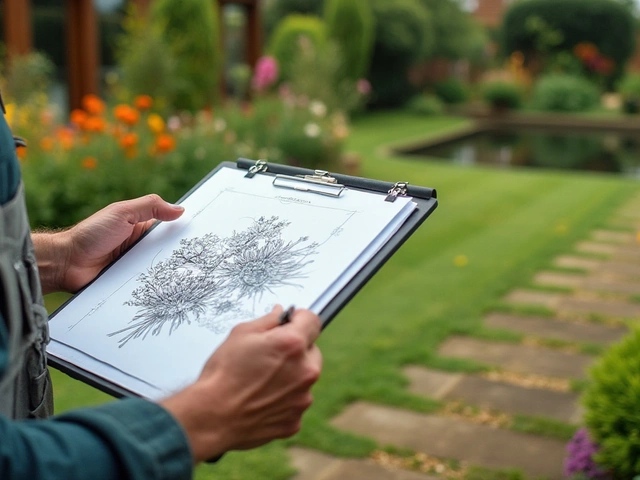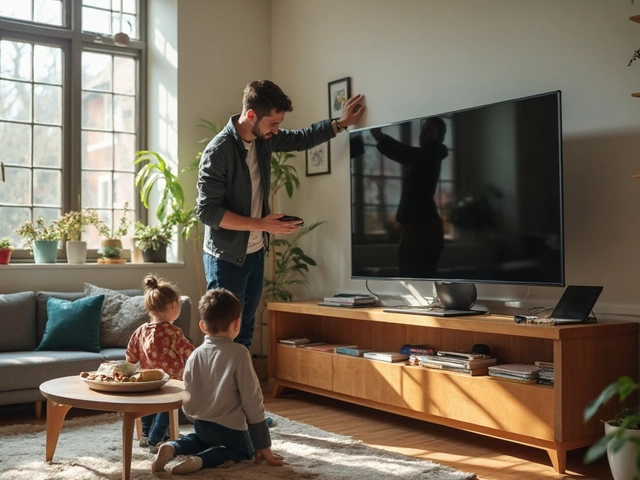You just brought home your dream TV, but dropping it on any random TV stand isn’t the move. You need the right setup for comfort, safety, and a better binge-watching vibe.
The first thing people notice? The height and position of your TV. If it’s way too high, neck pain is going to crash your movie nights. If the TV is balanced too close to the edge, one bump from a toddler or a pet and you get a disaster. This stuff isn’t just about looks—it’s about how you actually use your space every single day.
Pay attention to the width of your TV compared to the stand. The stand should always be wider so your TV isn’t hanging off the sides. It’s not just about balance; it totally looks off when the TV is wider than the furniture holding it up. Don’t forget about cable mess, either. A lot of people shove their TVs on stands and then fight a tangle of wires for weeks. Planning for plugs and cable routes saves your sanity later.
- Finding the Perfect Spot for Your TV
- Choosing the Right TV Stand Size
- Screen Height: Where Should Your Eyes Land?
- Securing Your TV for Safety
- Cable Management Tips
- Making It Look Good: Style and Practicality
Finding the Perfect Spot for Your TV
Nailing the right spot for your TV isn’t as simple as plopping it down and calling it done. There’s the room lighting, your couch position, and even those random sunbeams that glare up the screen right when your show gets good.
First things first, look at where you usually sit. Your TV should face your main seating area head-on, not off to the side. Most folks watch TV from about 8 to 10 feet away in average living rooms. That distance isn’t just a guess—Samsung actually says the ideal viewing distance is about 1.5 to 2.5 times your TV’s diagonal size. So if you grabbed a 55-inch TV, aim for your seat to be 6.5 to 11.5 feet back.
| TV Size (inches) | Ideal Viewing Distance |
|---|---|
| 43" | 5.5 - 9 feet |
| 50" | 6.5 - 10.5 feet |
| 55" | 6.5 - 11.5 feet |
| 65" | 8 - 13.5 feet |
Light makes a huge difference. Direct sunlight can wash out even the best screens. Put the TV where windows won’t throw glare across the display, or use blackout curtains if shifting furniture isn’t an option.
Check where your power outlets are. Longer extension cords look messy and are a trip hazard no one wants. Put your TV stand close enough to the outlet so cables don’t get stretched or tangled.
- Face the TV toward your main seating area.
- Keep the screen out of direct sunlight to avoid glare.
- Stay close to a power outlet, but don’t block foot traffic.
- Double check if there’s a clear line of sight from your typical spot.
Think about traffic flow. Don’t let the TV turn into an obstacle or get bumped when people pass by. It’s all about blending your everyday living space with a killer TV setup that actually works for how you live.
Choosing the Right TV Stand Size
So, you’ve picked out your TV and now you’re eyeing that TV stand. Here’s the deal: the stand should be wider than your TV—ideally by at least 2 to 6 inches on each side. That’s not just a style thing. It actually helps keep your TV stable and less likely to tip, especially if you have pets, rowdy kids, or just tend to bump into things.
The TV stand size makes or breaks your whole setup. A stand that’s too small puts your expensive screen at risk. Go too big, and your living room can look out of balance. For example, if you picked up a 55-inch TV, you probably want your stand to hit at least 57 to 60 inches in width. If your TV’s stand legs are at the edges, measure between those legs and make sure your stand is wider. Don’t just eyeball it—get the tape measure and write down those numbers.
According to Consumer Reports, "A TV stand that matches the width of your TV provides a nicer look, but make sure it’s at least as wide as the TV’s feet for safety."
Still not sure? Check the chart below for a quick reference:
| TV Size (Diagonal) | Recommended Stand Width |
|---|---|
| 43" | 47-50" |
| 50" | 54-57" |
| 55" | 57-60" |
| 65" | 68-72" |
| 75" | 80-85" |
Height matters, too. Most people forget about this, but if your stand is crazy low or high, you’ll notice it after a couple episodes. Aim for the TV center to land at your eye level when you’re sitting down—usually, a stand around 20 to 30 inches tall is the sweet spot.
One last tip: think about storage. If you’ve got gaming consoles, soundbars, or a stack of remotes to wrangle, pick a stand with shelves or cabinets. There’s nothing cool about a TV surrounded by clutter. Keep everything neat, and your setup will look put together—no stress, just comfort.
Screen Height: Where Should Your Eyes Land?
Getting your TV at the right height changes everything, from comfort to picture quality. The main rule is simple: your eyes should be level with about one-third up from the bottom of the TV screen while you’re sitting down. Most folks don’t realize how much difference a few inches can make. Mounting or setting a TV too high is a neck-strainer, and too low feels awkward for long watching sessions.
The ideal screen center usually sits between 42 and 48 inches off your floor, which lines up well with average seated eye-level. Got a non-standard couch or love seat? Measure your eye level from your seat to the floor, then match that to the center of the TV. Use a tape measure for this—it’s always better than guessing. If you spend more time slouching on bean bags, you might want a few inches lower than average.
Here's a quick cheat-sheet for common TV sizes and stand heights:
| TV Size (inches) | Recommended Stand Height (inches) |
|---|---|
| 50 | 23-26 |
| 55 | 21-24 |
| 65 | 18-22 |
If you’re stacking soundbars, gaming consoles, or anything bulky under the TV, remember to factor that into the height calculation. Sometimes, the setup pushes the screen a few extra inches higher than you’d like, but don’t ignore comfort for style.
- Always measure both your eye-level sitting down and the height of the stand.
- Aim for the TV stand to keep the middle of your screen around 42 inches from the floor for most people.
- Test it: Sit down, look at where your eyes naturally land, and adjust as needed before you fully commit to the placement.
Eurosport did a survey in 2023 and found that 67% of TV owners wished they’d measured better before setting up. Measuring once means zero regrets later, so take the few extra minutes while you can.

Securing Your TV for Safety
This part isn’t just for parents or pet owners—TV tip-overs are a problem for everyone. One study from the U.S. Consumer Product Safety Commission found almost 12,000 injuries a year in the U.S. are related to furniture and TV tip-overs. Modern TVs are getting thinner and taller, which actually makes them easier to knock over if they’re not properly set up.
The most reliable way to keep your TV from going down is to use anti-tip straps or brackets. These kits usually come with two straps and fitting hardware for most TVs and stands. You just screw one end into the back of the TV, attach the other to the stand—or bolt it to the wall if you want max safety—and tighten them up. Brands like Sanus, Safety 1st, and Echogear are popular because they actually fit most TVs and furniture.
Here’s how you can easily lock down your TV:
- Place your TV in the center of the TV stand, with space behind for some airflow and cables.
- Find the VESA mounting holes on the back (these are standard on almost every flat-screen now).
- Attach the anti-tip strap to those holes using the bolts provided.
- Connect the other end to the back of the stand or, for extreme safety, a wall stud.
- Pull tight. The slack should be gone, but don’t over-crank or you could crack your screen.
Some people skip the straps and rely on the TV’s own stand, but this is risky—especially if your stand is narrow or you have little kids running around. If your TV stand has a special mounting bracket, use it. Bolting the TV to the stand is safer than letting it sit free.
More TV tip-over facts:
| Fact | Detail |
|---|---|
| Average TV weight (55") | 35-45 lbs (can still tip easily) |
| Most common tip-over victims | Children under 10 |
| Where most tip-overs happen | Living rooms and bedrooms |
| Year TVs became “riskier” | 2010s (as TVs got taller/thinner) |
Staying safe means not just buying the right TV stand, but also securing the TV itself. It’s a quick job that saves huge headaches later—literally.
Cable Management Tips
If you’re sick of the mess behind your TV stand, you’re definitely not alone. Cable chaos is basically the default for most setups, but cleaning it up makes a real difference—not just for looks, but for safety and easy cleaning too. Plus, if you’re moving things around or plugging in something new, it saves you from wrestling a nest of wires every time.
Start by measuring how many devices will hook up to your TV: cable box, game console, speaker bar, whatever. The more devices, the more cables. Keeping them straight from the beginning avoids headaches later. By the way, around 70% of people in the U.S. have at least three devices hooked to their main TV stand. That’s already a handful of cables right there.
- TV stand features matter—a stand with built-in holes or cable channels saves you a lot of grief. If your stand doesn’t have these, you can buy stick-on cable clips or sleeves for cheap.
- Velcro ties and twist ties are perfect for grouping and shortening cables. Skip zip ties if you’re likely to change devices, because un-clipping those is always a pain.
- Stick all your power cords in a single surge protector. Not only does this keep everything in one spot, but it also protects your stuff from power surges.
- Label both ends of your cables. You don’t need a fancy label machine—just write on some masking tape. This is huge when you need to swap out a cable or unplug something in a hurry.
- Keep the cables off the floor and behind the stand to avoid trips or pet chewing accidents. Cable protectors or simple hooks can help.
Here’s a quick breakdown to see how cable management pays off:
| Method | Cost | Time to Set Up | Clutter Reduction |
|---|---|---|---|
| Built-in Stand Channels | More expensive stand | 10-15 mins | High |
| Stick-on Cable Clips | $5-$10 pack | 5-10 mins | Medium |
| Velcro Ties | $3-$8 pack | 2-5 mins | Medium |
It’s amazing how a few minutes dealing with wires can make your entire setup cleaner and easier to use. A little planning now saves piles of annoyance later on.
Making It Look Good: Style and Practicality
A killer looking setup goes way past just dropping your TV on a table. The right mix of style and function makes the whole room work better. The TV stand itself sets the tone—mid-century, industrial, modern, whatever matches your vibe. But style shouldn’t mess with function. If you go for a TV stand with doors or drawers, make sure there's enough space for remotes, consoles, and all your streaming gadgets.
You want your TV stand to actually fit the room, not overwhelm it. Here’s a pro tip: Leave a few inches of open space on either side of the TV for breathing room. That gives it a balanced, intentional look. If your TV is centered on the stand but your space is lopsided (like in a weird corner), use plants, speakers, or books to fill awkward gaps. Floating shelves above or beside the TV are clutch for both extra style and storage.
Lighting isn’t just for mood—it makes a difference in how the TV looks, both on and off. Try LED strips behind the TV for that cinema glow (it’s called bias lighting), or set a small lamp on the stand for some ambiance at night. According to a recent survey by the American Lighting Association, 62% of people said adding subtle lighting improved their home entertainment setup.
| Style Feature | Room Impact |
|---|---|
| Open shelves | Keeps things airy, easy access to game consoles |
| Closed storage | Hides clutter, looks minimalist |
| Natural wood finishes | Brings warmth, works with most color palettes |
| Metal frames | Adds a modern edge, sturdy support |
| LED bias lights | Reduces eye strain, boosts movie vibes |
Don’t forget about practicality: make sure nothing blocks the bottom edge of the screen or your remote sensors. If you have a soundbar, measure to ensure it fits below the TV—even the fanciest setup gets annoying if you’re always juggling sound.
Last thing, keep it personal. Add a framed photo, a houseplant, or a stack of favorite games—small touches go a long way. When your TV setup feels “done,” it means it fits your style and your everyday habits. That’s how you get a space you actually want to use.
